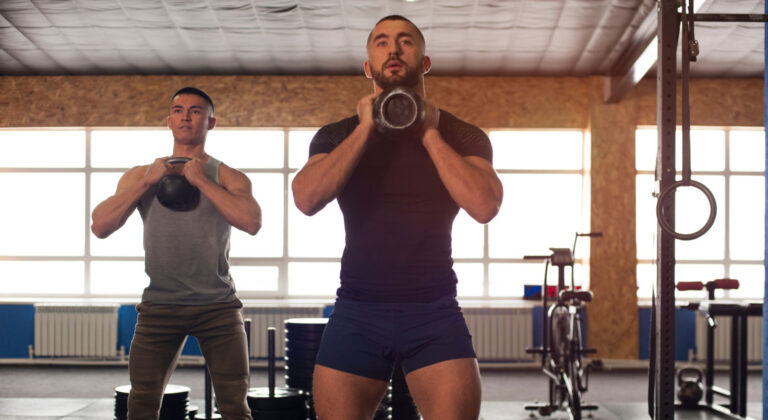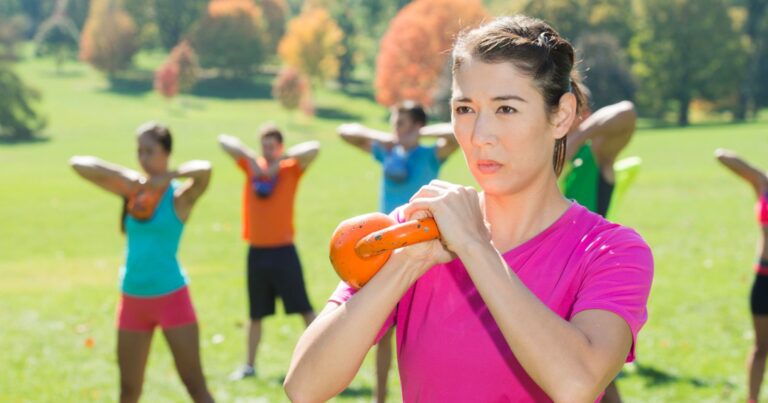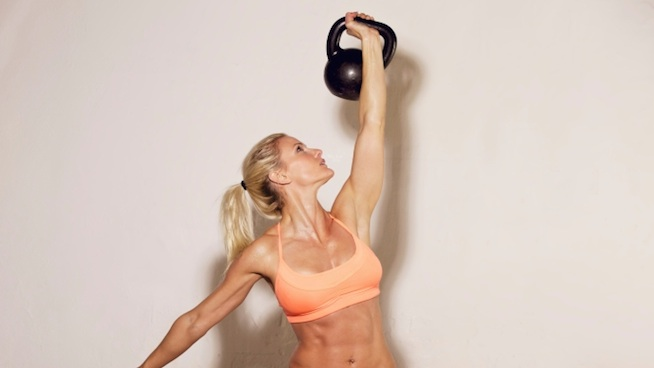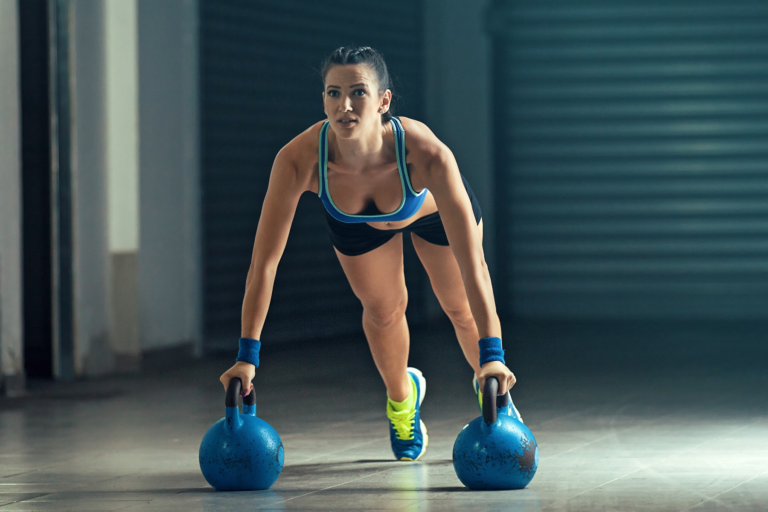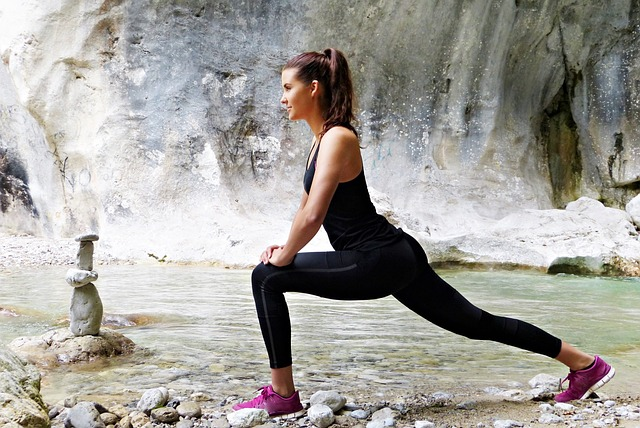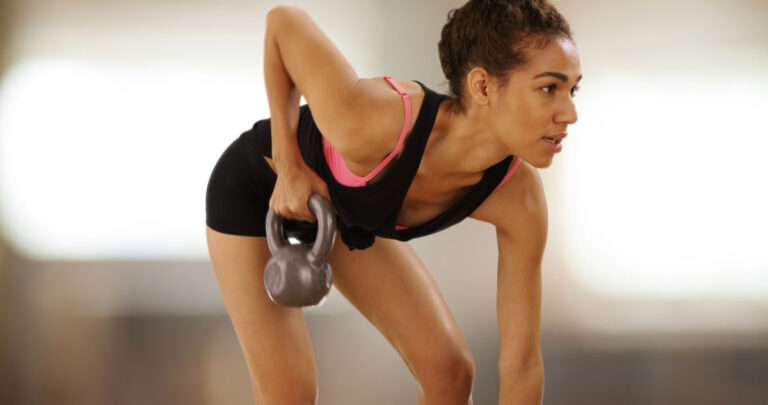4 Dynamic Warm Up Exercises to Start Your Training Session and Improve Mobility
Dynamic warm-ups, or dynamic stretching, make you move your body across a variety of range of motions, and hence don’t require you to hold a stretch like the more common static stretching techniques. This stretching style is a great way to develop and maintain good mobility but is also a perfect way to warm up before a training session. This is because the active motions lead to increased blood flow to the muscles, and hence more oxygen and nutrients that prepare them for exertion. Muscle activation and increased mobility are very important aspects when aiming to strengthen your body, as they enable you to perform exercises using the full range of motion free from pain and injury. In fact, having good mobility prevents muscle stiffness, which is positively correlated with pain and soft tissue damage. In the next section, we provide you with 4 examples of dynamic stretches that you should start including in your warm-ups if you want to improve your mobility.
If you prefer, we also have a downloadable pdf with the workout below.
4 Total Body Dynamic Warm-Ups to Start Your Training
In this section, we take you through some dynamic workouts that target your whole body and that can be done prior to your training session to improve mobility and prevent injuries. Ideally, you should warm up until your heart rate reaches 60-70% of your maximum heart rate, as this indicates your heart started pumping more blood and that your body is getting ready to move more intensely. If you don’t have a heart monitor to check your heart rate, warm up for no longer than 5-10 minutes, as stretching dynamically for too long can actually lead to fatigue which can ultimately affect performance.
Inchworms
Technique
- Start from an upright position
- Bend down using your hips and maintaining your legs straight. Place your hands on the floor, in front of your feet
- Use your hands to walk your torso away from your feet
- Stop when you achieve an extended plank position, with your hands placed under your shoulders, whilst maintaining your legs extended and your back neutral
- Use your hands to walk back to your feet, once there, move your torso up to get back onto the starting position. This is one repetition
Reps and Sets
Perform this exercise 1-2 times for 30 seconds
Yoga Squats
Technique
- Start from an upright position, with your feet placed hip-width apart
- Using your hips, bend forward to grab the tip of your toes with your hands
- Bend your knees to squat down, whilst holding onto the toes
- Hold the stretch at the bottom, then move back up. This is one repetition
Reps and Sets
Perform 8-10 repetitions for 2-3 sets
Single-Leg Squat Thrust
Technique
- Start from an extended plank position, with your hands in line with your shoulders and your spine neutral
- Move one leg forward and position it next to the hand placed on the same side of the floor
- Holding this position, push your hips gently forward, to stretch the groins and hamstrings
- Move the leg back to its original position. This is one repetition. Repeat on the other leg
Reps and Sets
Perform 5-8 repetitions on each side for 1-2 sets.
Back Lunge Twist
Technique
- Start from an upright position
- Move one leg back whilst also bending the knee of the front leg to lunge yourself down
- Once in a back lunge position, twist your torso gently to each side, then move it back to the center
- Use the front leg to push yourself back up into an upright position and the back leg to its original place. This is one repetition. Repeat on the other leg.
Reps and Sets
Perform 8-10 repetitions on each side, for 1-2 sets
Wrapping Up
Perform 5-10 minutes of active warm-up exercises before your workout to prepare your body appropriately for the activity you are going to undertake, as this enables your heart to pump more blood, oxygen, and nutrients to your muscles. Dynamic stretches are a great way to get ready for a workout, but they are also very important to maintain good mobility and prevent injuries, both of which can also impair fitness performance. For these reasons, make sure to include them in your workout routine if you want to get stronger.
References
Aguilar, A.J., DiStefano, L.J., Brown, C.N., Herman, D.C., Guskiewicz, K.M. and Padua, D.A., 2012. A dynamic warm-up model increases quadriceps strength and hamstring flexibility. The Journal of Strength & Conditioning Research, 26(4), pp.1130-1141.
McCrary, J.M., Ackermann, B.J. and Halaki, M., 2015. A systematic review of the effects of upper body warm-up on performance and injury. British journal of sports medicine, 49(14), pp.935-942.
McMillian, D.J., Moore, J.H., Hatler, B.S. and Taylor, D.C., 2006. Dynamic vs. static-stretching warm up: the effect on power and agility performance. The Journal of Strength & Conditioning Research, 20(3), pp.492-499.

